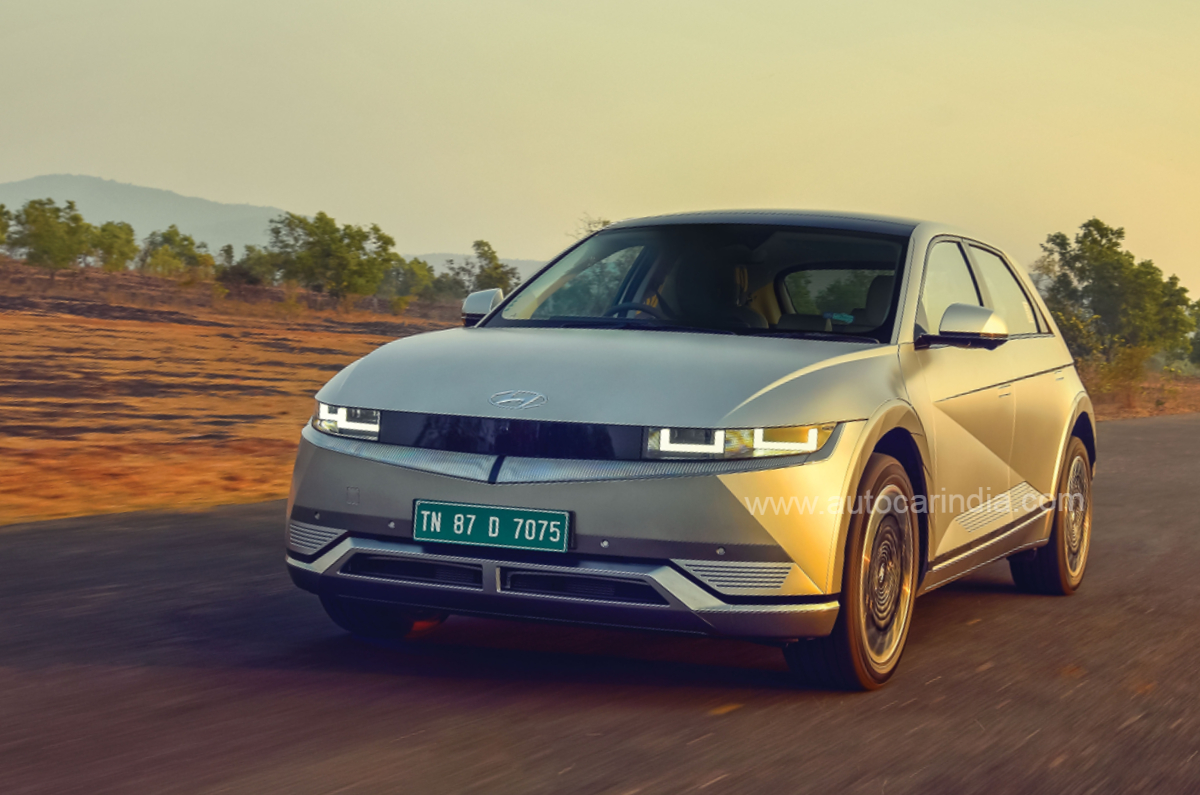
After winning several international awards and accolades post its global debut in 2021, the Hyundai Ioniq 5 has finally gone on sale in India. Being locally assembled, this all-electric offering wears an aggressive introductory price tag of Rs 44.95 lakh (ex-showroom), making it considerably cheaper than the fully-imported Kia EV6, which is built on the same platform.
Globally, the Ioniq 5 is available with either all-wheel drive (dual motor set-up) or rear-wheel drive (single motor set-up) and is offered with either 58kWh or 72.6kWh battery. For India, the Ioniq 5 comes with the larger 72.6kWh battery and as rear-wheel drive only.
The Hyundai Ioniq 5 is built on Hyundai’s Electric-Global Modular Platform (E-GMP), which is a dedicated EV platform that also underpins the Kia EV6. It’s essentially a skateboard and accommodates the 72.6kWh battery low down, beneath the cabin floor, making it extremely space efficient, resulting in a flat cabin floor and no transmission tunnel to speak of.
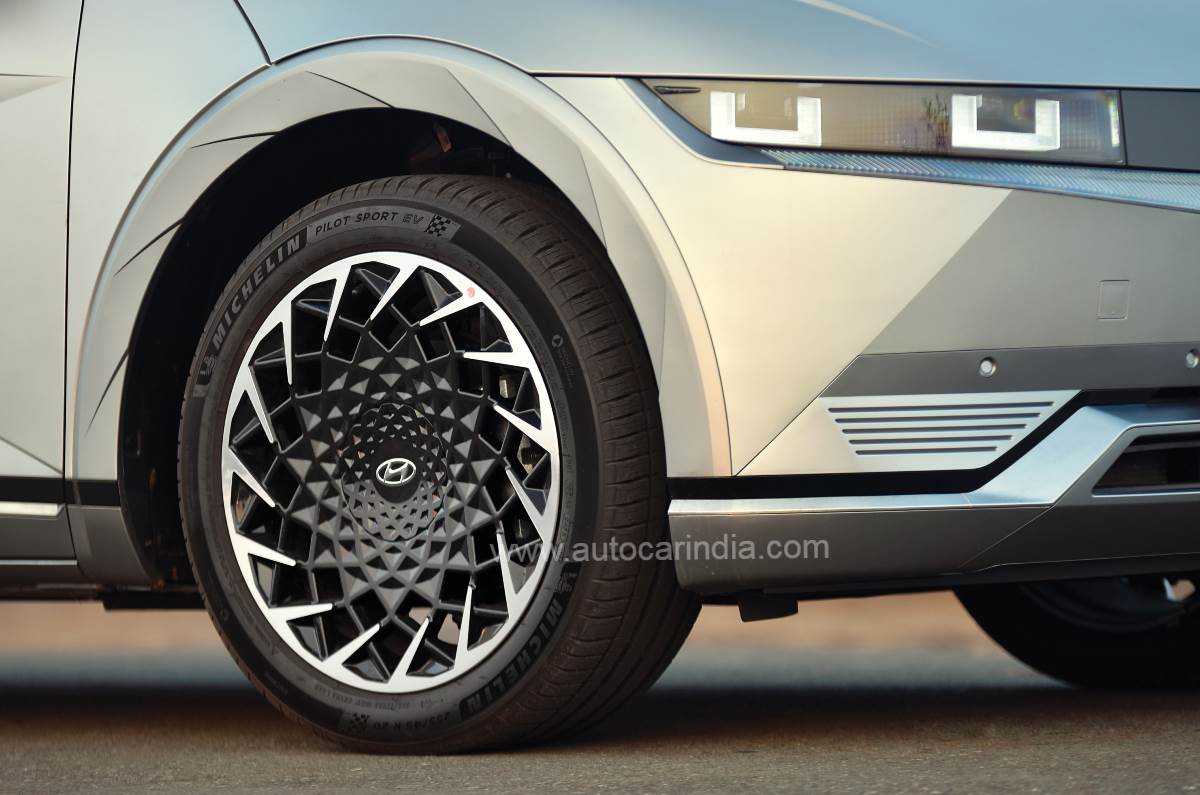
Its wheels are stretched to the extreme corners of the vehicle, and it also boasts a luxury sedan-rivalling 3m-long wheelbase. And measuring 4,635mm, 1,890mm and 1,625mm in length, width and height, respectively, the Ioniq 5 is similar in size to a Mercedes-Benz GLC. Commendably, the Hyundai Ioniq 5 has secured a full 5-star score in Euro NCAP crash tests in 2021.
The Ioniq 5 draws inspiration from the Pony, Hyundai’s first mass-market passenger car, hence, in profile, this EV looks like a large hatchback. But in line with the current trends, it gets its fair share of crossover treatment with contrasting grey body cladding, large 20-inch wheels and a raised ride height.
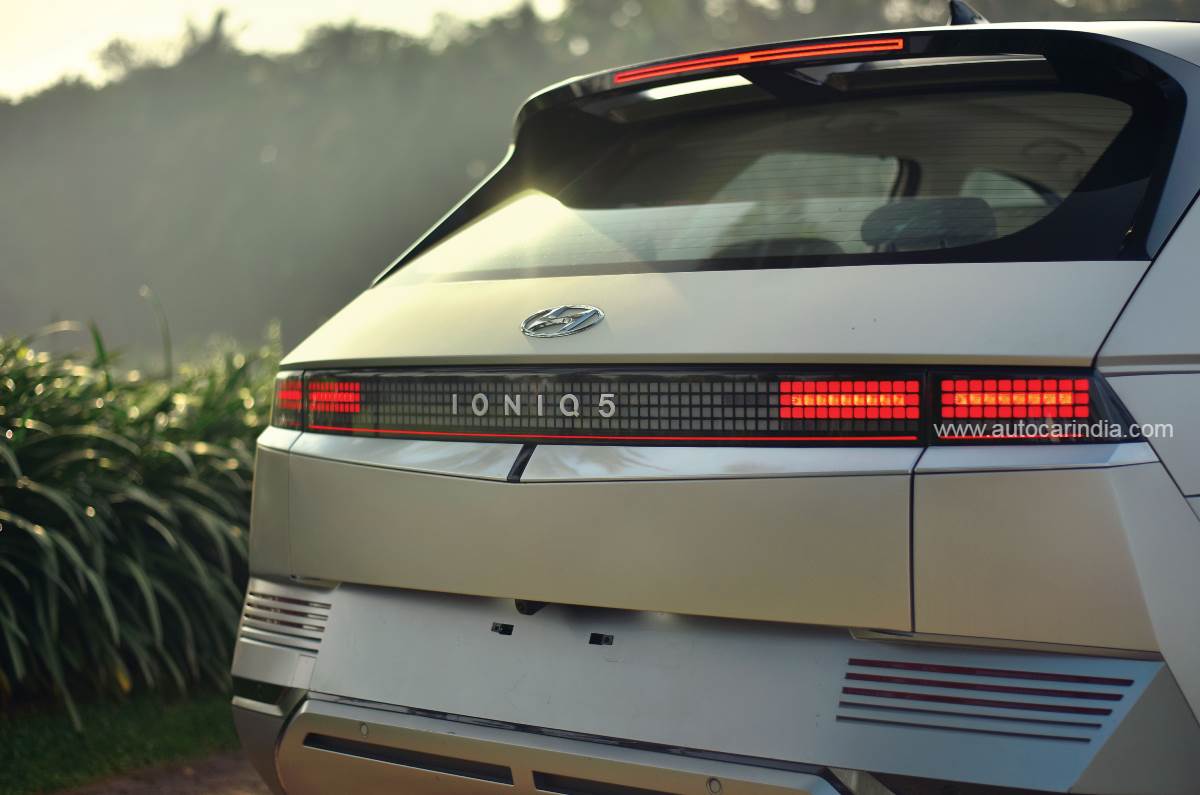
Its styling is a unique mix of retro and futuristic design cues. What stand out are its ‘parametric pixel lights’, which are intricately detailed LED headlamps and tail-lamps with a cube-like theme. The bodywork features tasteful detailing and chiselled lines that add a lot of character, and the thick sloping C-pillars are reminiscent of the Pony’s.

The Ioniq 5’s interior is a sea of light and bright materials, with an underlying theme that shows off modernity and quality. Interestingly, the interiors are dressed up with the help of eco-friendly materials such as recycled plastic bottles, plant-based and natural wool yarns, eco-processed leather and bio colours with plant extracts. And what’s great is that fit-finish as well as the touch and feel of bits are simply top-notch. Expectedly, the light-coloured materials will need special care to keep clean.
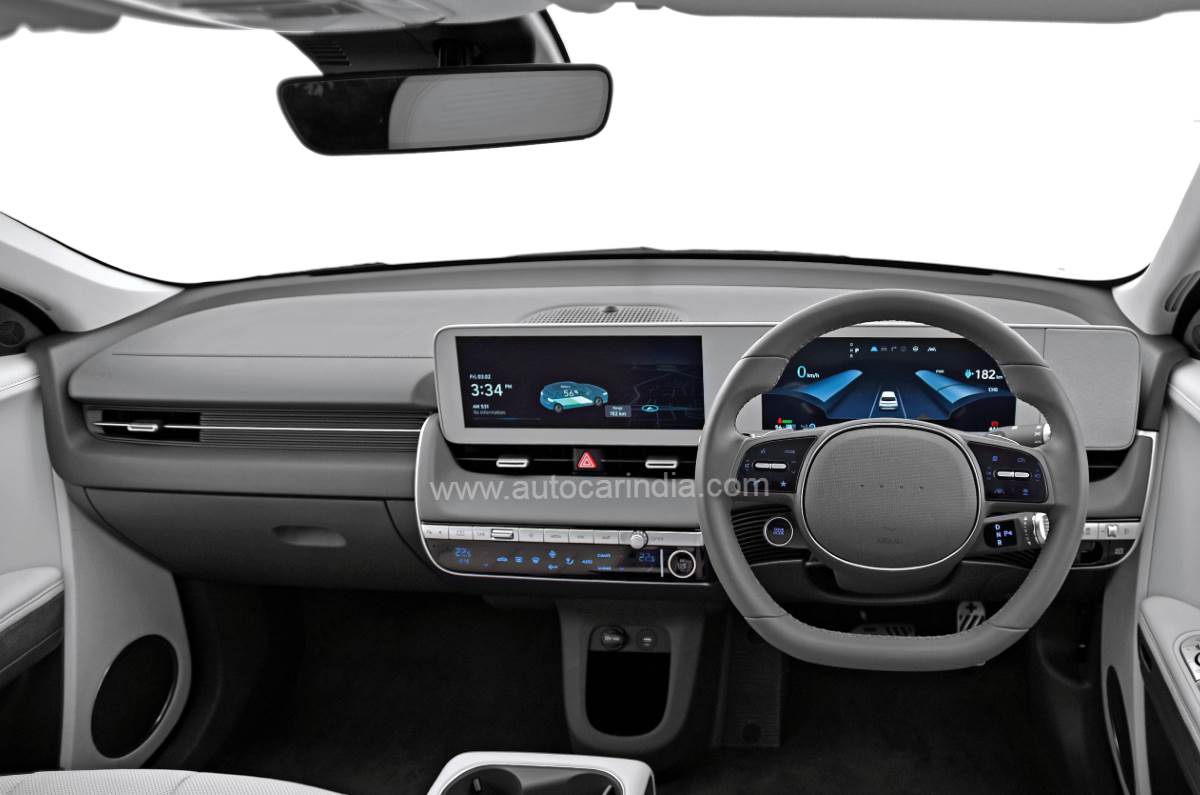
There’s a great sense of space thanks to the sheer width and height of the cabin; the bright colours and the massive greenhouse area thanks to the panoramic glass roof, further add to the experience, as does a flat floor. The dashboard is placed all the way front and tall drivers will particularly appreciate the fact that their left knee won’t foul with the dashboard. However, there are excessive dashboard reflections on the windscreen from the flat dashtop area, under the afternoon sun.
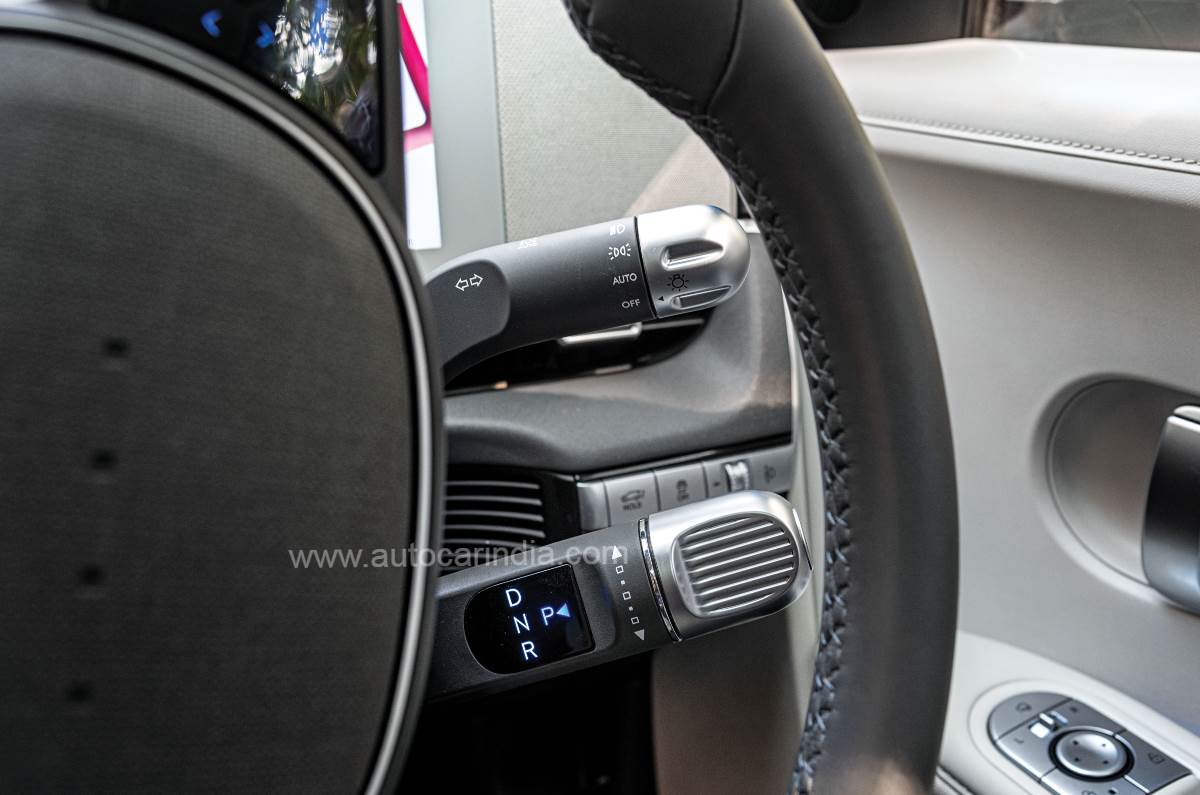
The focal point of the dashboard is the twin 12.3-inch screens – one for the instrument cluster and the other for the infotainment, both of which are surrounded by a white bezel. The display is crisp and the fonts are clear, however, certain bits of the broad instrument cluster are blocked from the driver’s field of vision by the steering. Speaking of which, it is a two-spoke unit, which feels great to hold and also features a round drive mode selector (Eco, Normal, Sport) mimicking some Mercedes-AMG models; however, it’s a push-button instead of a rotary selector. The Ioniq 5 also features a drive selector stalk placed beneath the headlamp stalk, but its functioning isn’t as intuitive as the Mercedes’s unit – instead of flicking it, this one needs to be rotated to select D, N or R.
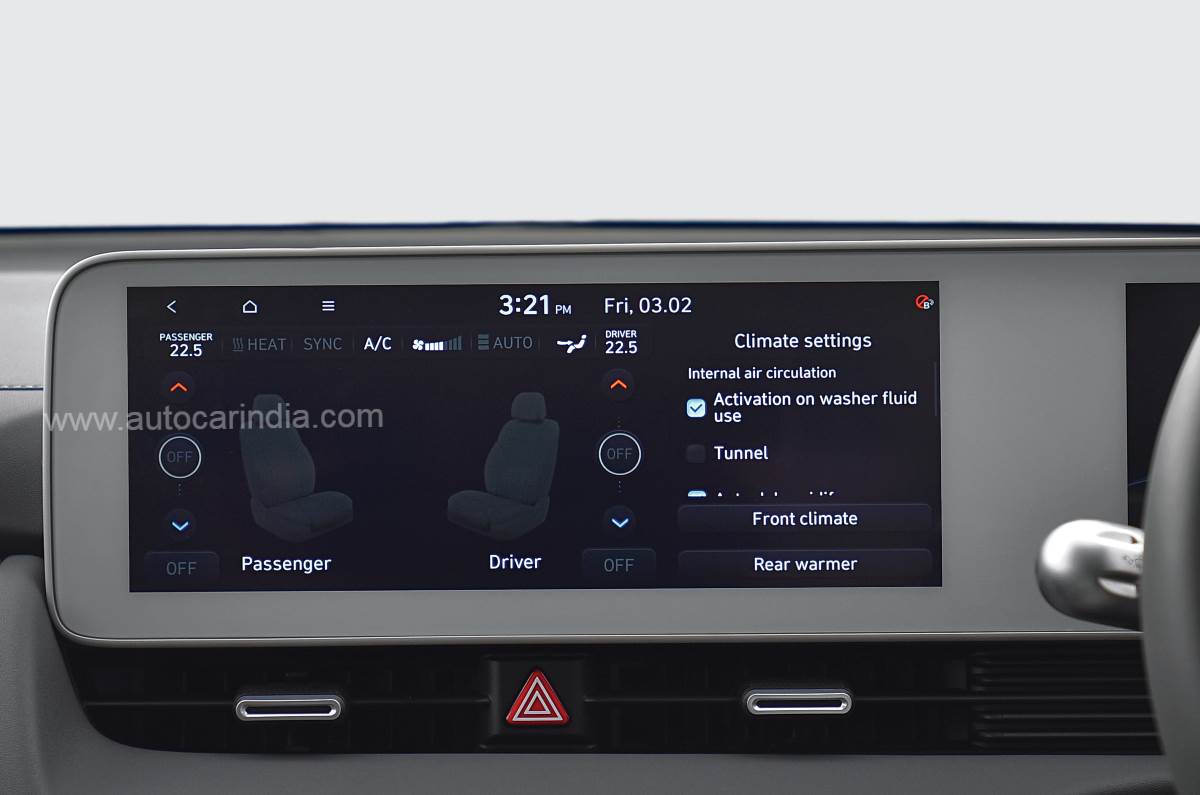
Commendably, the Ioniq’s front seats offer exceptional comfort – they are broad, seat cushioning is soft and they get plenty of electric adjustment, including ottomans (leg rests) and a zero-gravity position that lowers your hip point and raises your legs. The driving position is more like a raised hatchback, than an upright SUV, still with a good seat height travel, even shorter drivers will be able to find an agreeable perch. Adding to the comfort, they are heated and ventilated, however, to access these functions, one needs to access the menus on the infotainment screen, which isn’t convenient.
Even the two (outermost) rear seats can be heated, although the ventilation feature is reserved for the front seats only. They are comfortable thanks to the supportive seats and soft cushioning, but you also sit in a knees-up position thanks to the battery below.
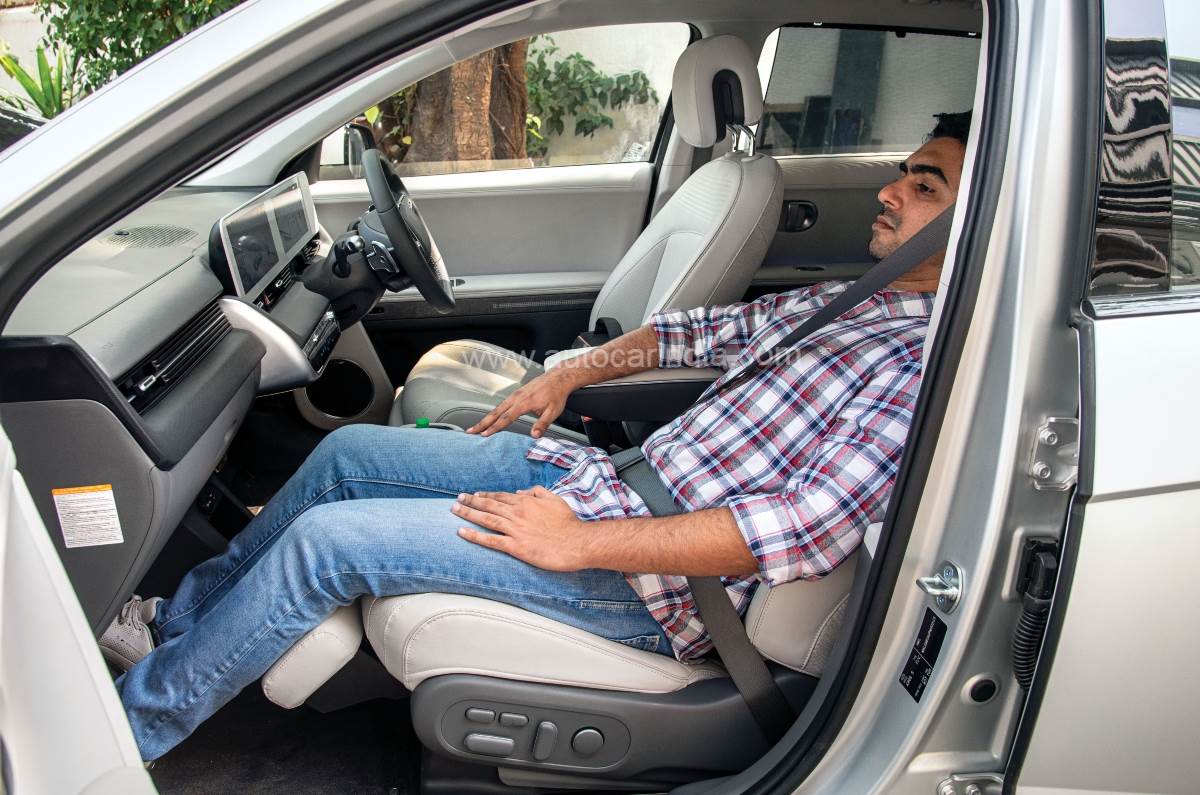
What’s nice is that you can alleviate this to some extent via the 60:40 backrest, which has a manual recline and the entire seat can be electrically slid fore-aft too. Space at the rear is ample and thanks to a wide cabin and flat floor, even a third passenger will feel welcome.
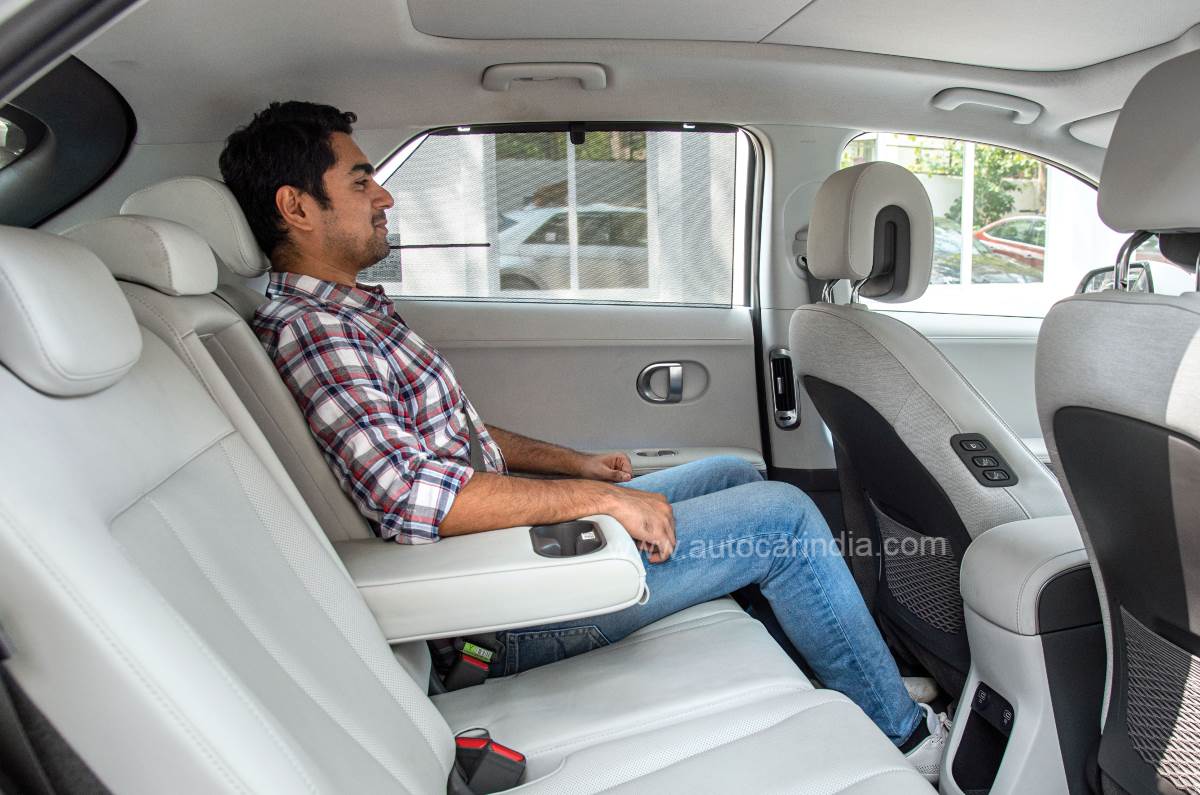
Its skateboard platform opens up a flat floor with no hump or transmission tunnel. In fact, there’s so much free space, it is probably one of the most accommodating cars in terms of storage. There’s a massive storage drawer in place of the glovebox, large door bins, cupholders for the front passengers, a wireless charging tray, a massive bay to store a small handbag and some space in the centre armrest console too.
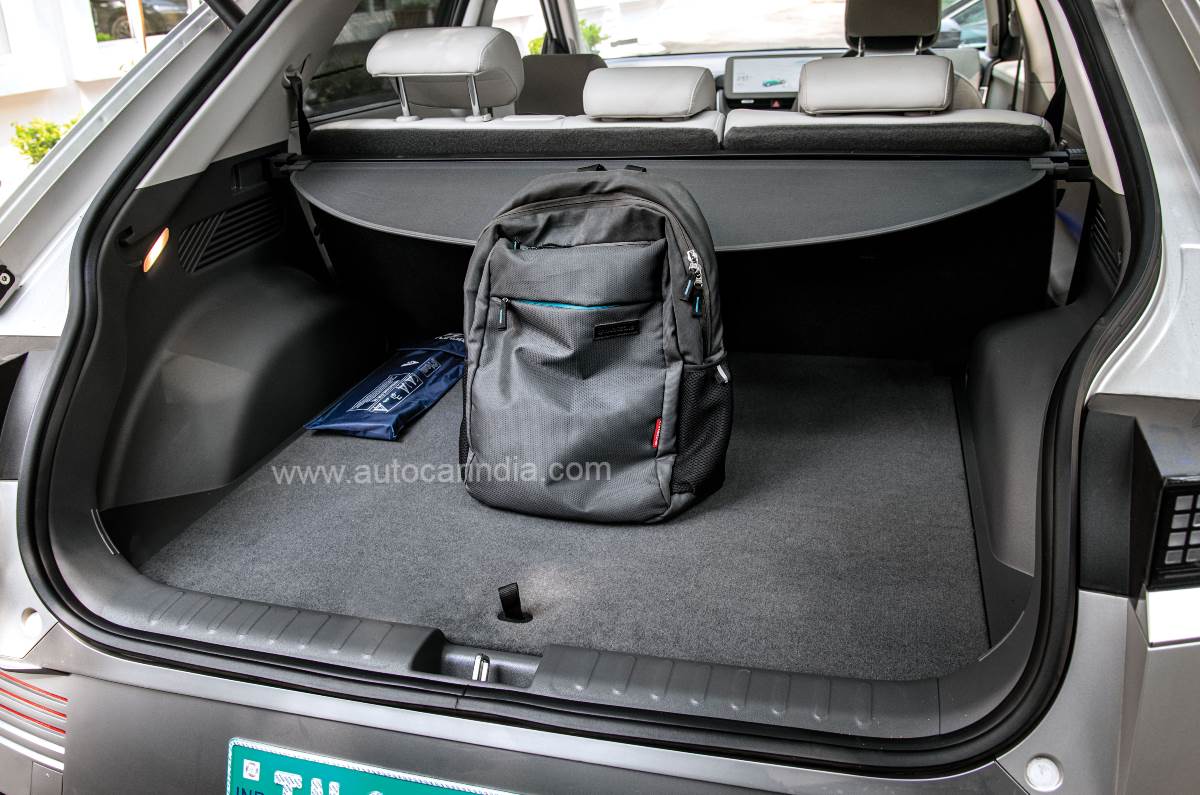
The entire console slides fore-aft to liberate legroom at the rear for the middle passenger, however, we found it best to simply leave it in the forward-most position. The Ioniq’s boot is quite large and well-shaped, although with the floor being rather high, it is shallow. With the seats pushed forward, the rated boot capacity is a respectable 527 litres, which can be increased to 1,587 litres with the second row folded. There’s also a 57-litre storage compartment beneath the bonnet, which can easily hold a duffle bag and some other smaller bits.
The Hyundai Ioniq 5 is generously equipped with electrically operable front seats with memory, heating and cooling functions, as well as rear seat adjustment with heating function. Other noteworthy features include a panoramic fixed glass roof, 8-speaker Bose sound system, a 360-degree parking camera, drive modes, dual-zone climate control, electric boot, ESP and six airbags.
It also packs in a suite of Advanced Driver Assistance Systems (ADAS) such as lane departure warning and lane-keeping assist, radar-based adaptive cruise control with stop and go, frontal collision warning as well as autonomous emergency braking, blind-spot collision warning as well as avoidance, blind-spot monitor, high-beam assist and leading vehicle departure alert. These systems are seamless in their operation, and some of these are useful not just on well-marked open roads but also in some everyday driving scenarios.
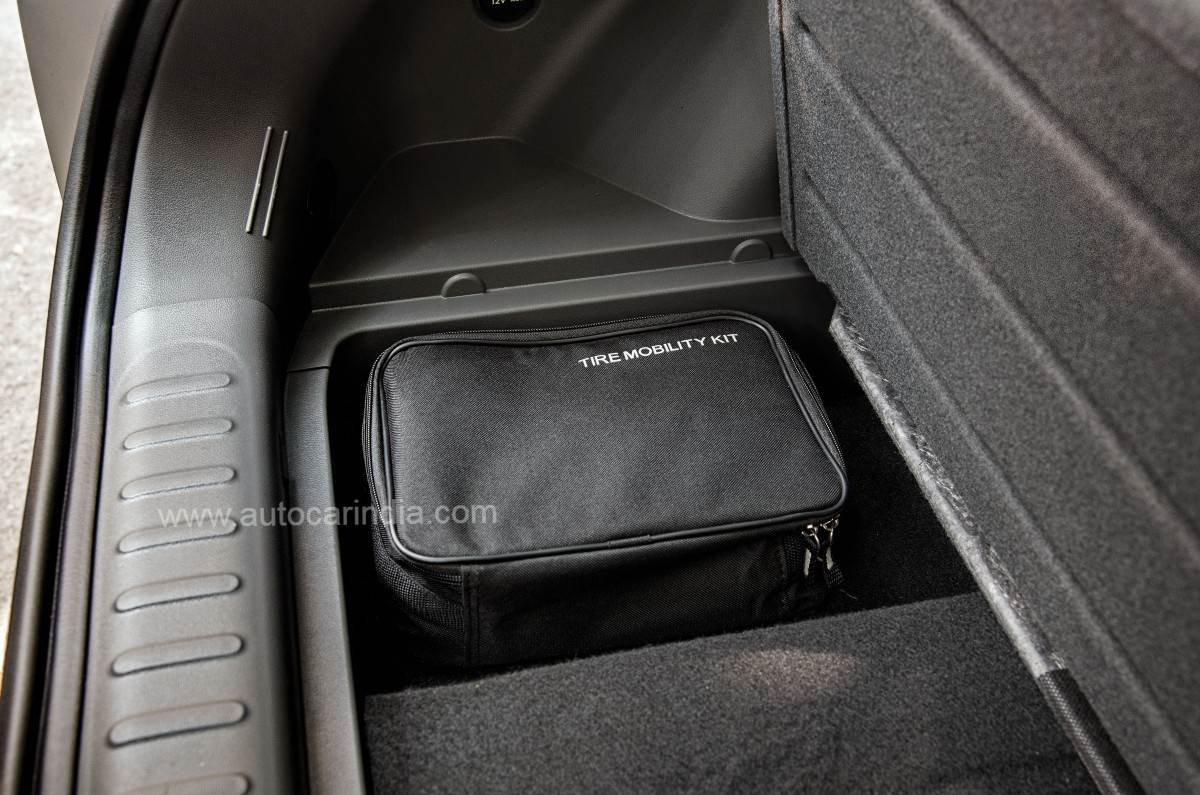
Missing from its equipment list are one-touch up and down rear power windows, wireless Android Auto and Apple CarPlay (current set-up is wired), a heads-up display and its glass roof isn’t openable. Also, it doesn’t get a spare tyre and owners will have to make do with a tyre repair kit that is part of the package.
Infotainment
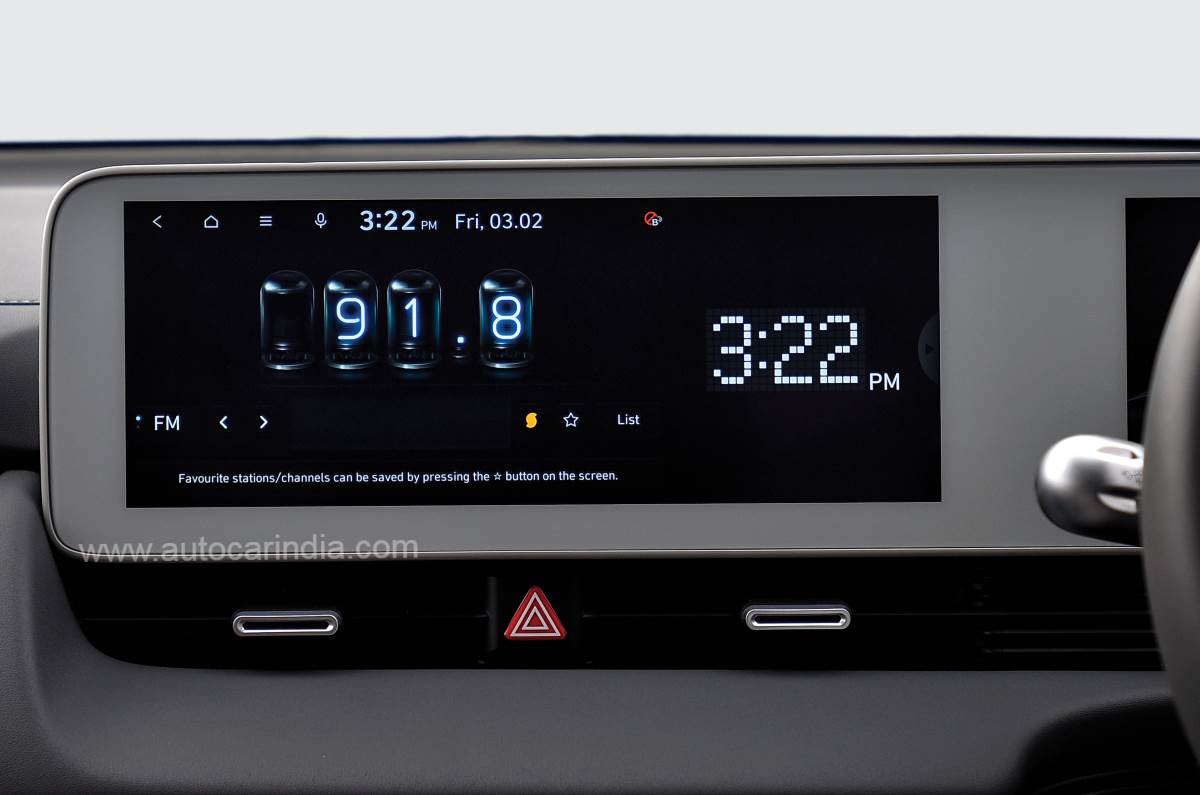
The slick 12.3-inch touchscreen has a crisp resolution and impressive touch sensitivity too. The system packs in GPS navigation in addition to a host of connected car features. Android Auto and Apple CarPlay are on offer, however, it is a wired set-up. Like the Creta, the Ioniq 5 also gets an 8-speaker Bose sound system. It also features in-built ‘Sounds of Nature’, which are soothing ambient sounds played through the speakers. What’s cool are the retro fonts on some of the menus. Even the very handy ‘SoundHorn’ app is integrated with the radio, which can identify the song and artist playing. It is a feature-packed system that also displays EV-related data, functions for climate control, seats ventilation/heating, 360-camera and a lot more.
The Ioniq 5 is a large car and it hauls a heavy 72.6kWh battery pack, hence it weighs a shade over two tonnes (2,015kg). As a result, its 217hp and 350Nm seem just about adequate. It’s not neck-snapping quick as many EVs are, but you certainly won’t feel a dearth of performance, thanks to the instant electric torque on demand that comes in nice and smooth. Besides, it’s as quick as many ICE engine cars at this price point and will hit 100kph from a standstill in just 7.74 seconds, and even reach a top speed of 190kph. To put its numbers into perspective, the 190hp Mercedes GLA 220d 4matic accelerates from 0-100kph in 8.63 seconds, and because the Ioniq 5 delivers all its torque instantly, with no gears to deal with, it’ll even out drag the Mercedes in a rolling race from 20-80kph and 40-100kph by 0.59 and 1.25 seconds, respectively.
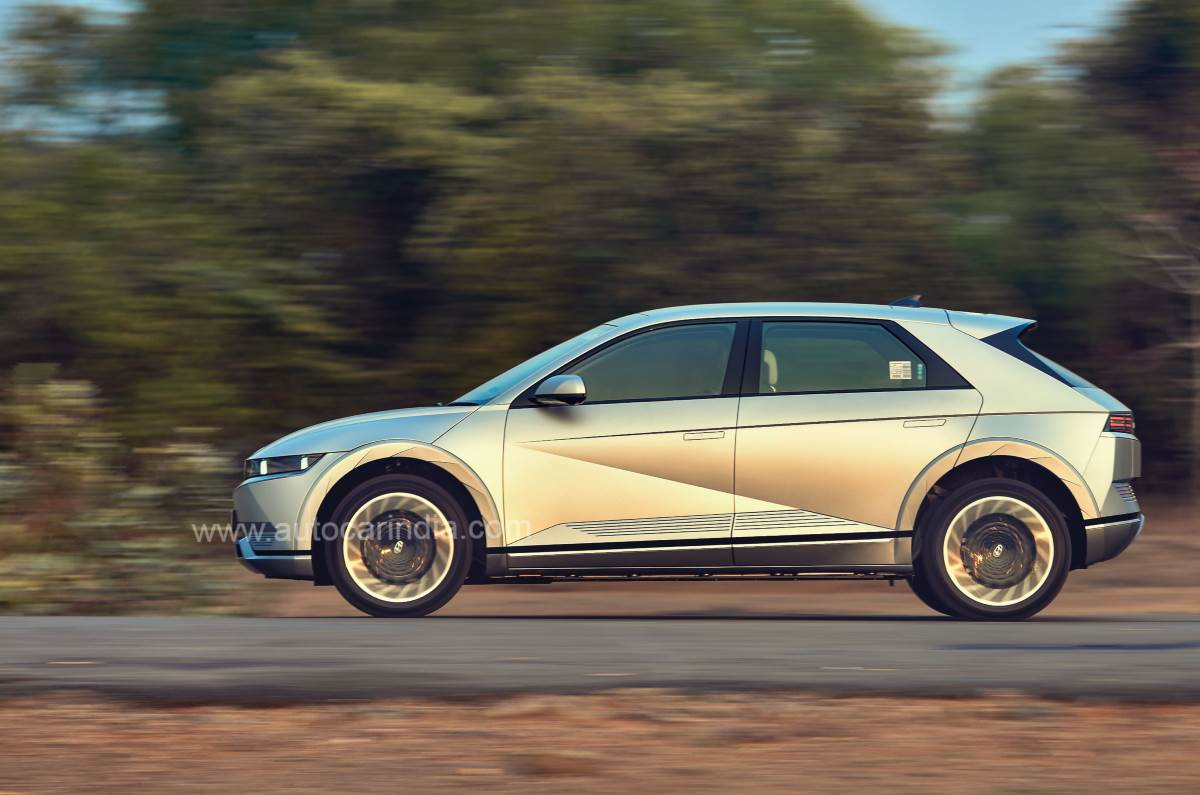
There are drive modes too, which adjust part-throttle responses, dulling the acceleration in Eco and sharpening it in Sport. However, with your foot pinned to the floor, the Ioniq 5 accelerates similarly in all three modes. There are paddle shifters too via which you can adjust the level of regenerative braking, and like the Kona, it is possible to tug the left paddle and bring the Ioniq 5 to a complete halt without pressing the brake pedal. Speaking of which, equally noteworthy is the brake pedal feel that quite seamlessly integrates the regenerative function as well as the mechanical braking, thus feeling very natural and progressive.
The Ioniq’s ARAI-certified range is 631km on a full charge, however, in our real-world test in Eco mode, it achieved 457km in a combined cycle, with an average efficiency of 6.30km/kWh, which is far from its claimed figure but still very respectable. In fact, it is higher than some luxury electric SUVs, which cost twice as much. With frequent stop-go in the city, efficiency of 7.07km/kWh is easily achievable, which translates to a range of over 500km. And at steady cruising speeds where consumption is higher and there are fewer chances for regeneration, efficiency drops to 5.67km/kWh, hence expect the range to be around 400km.
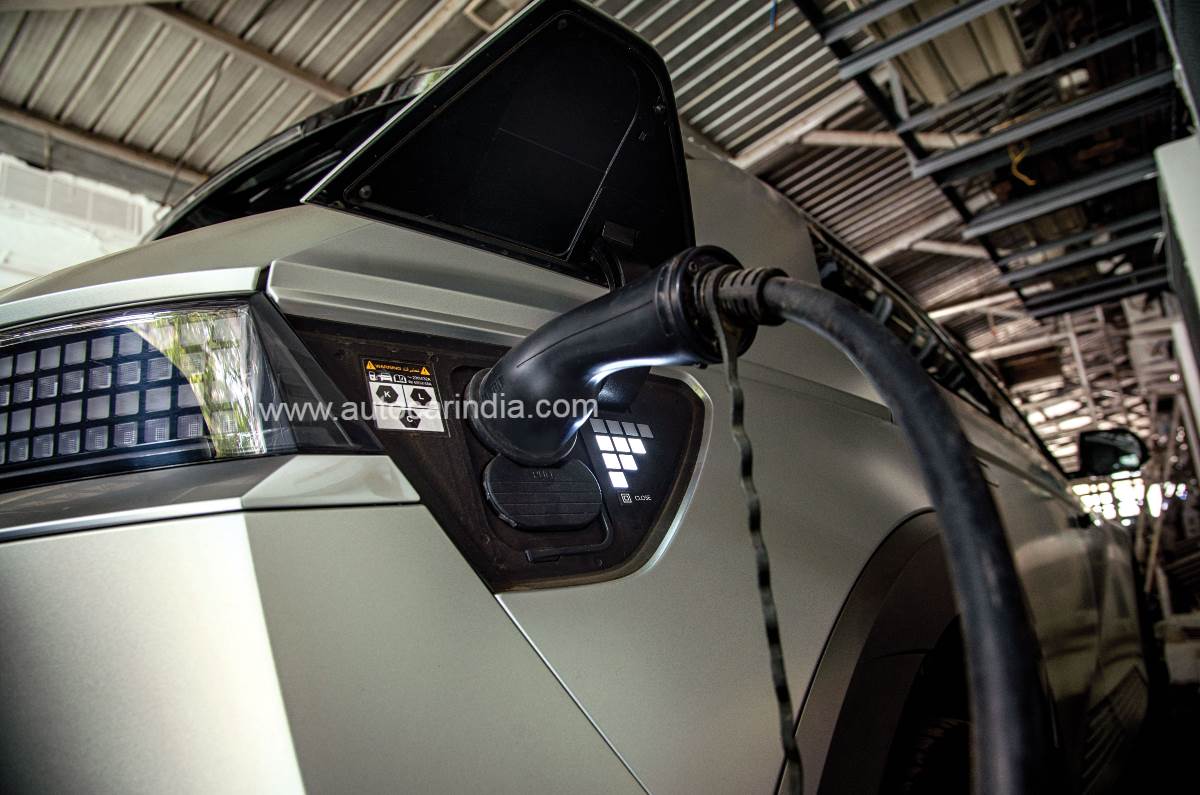
Hyundai’s E-GMP supports 800V battery tech, which allows ultra-fast charging. The company also claims that using a 50kW DC fast charger, the Ioniq 5 can charge its battery from 10-80 percent in just 57 minutes. We used a 11kW AC wall box and it charged its battery from 20-100 percent in about 5.5 hours. With the help of a 30kW DC fast charger, it charged from 32-100 percent, consuming 50kWh, in merely 1 hour and 45 minutes. We even topped up its battery at a 150kW DC fast charger from 60 percent and it took merely 36 minutes to top up 32.52kWh of charge.
Hyundai has done a great job setting up the Ioniq’s suspension. With its long wheelbase, and its wheels stretched to the extreme corners of the car, the Ioniq 5 feels planted and drives with a sense of maturity. Uniquely, it features integrated drive axles wherein the driveshaft is directly connected to the wheel bearings, to put down the power from the motor more effectively. All its power is cleanly channelled to its rear wheels, and appreciably, there’s adequate heft and directness from the steering, making it rather entertaining to drive. Sure, it isn’t as sharp or precise as its sporty cousin, the Kia EV6, and the Ioniq’s focus is towards comfort, so it rolls a bit around corners, but thanks to its pillowy ride, it glides over wavy roads and expansion joints with soft and controlled vertical movements.
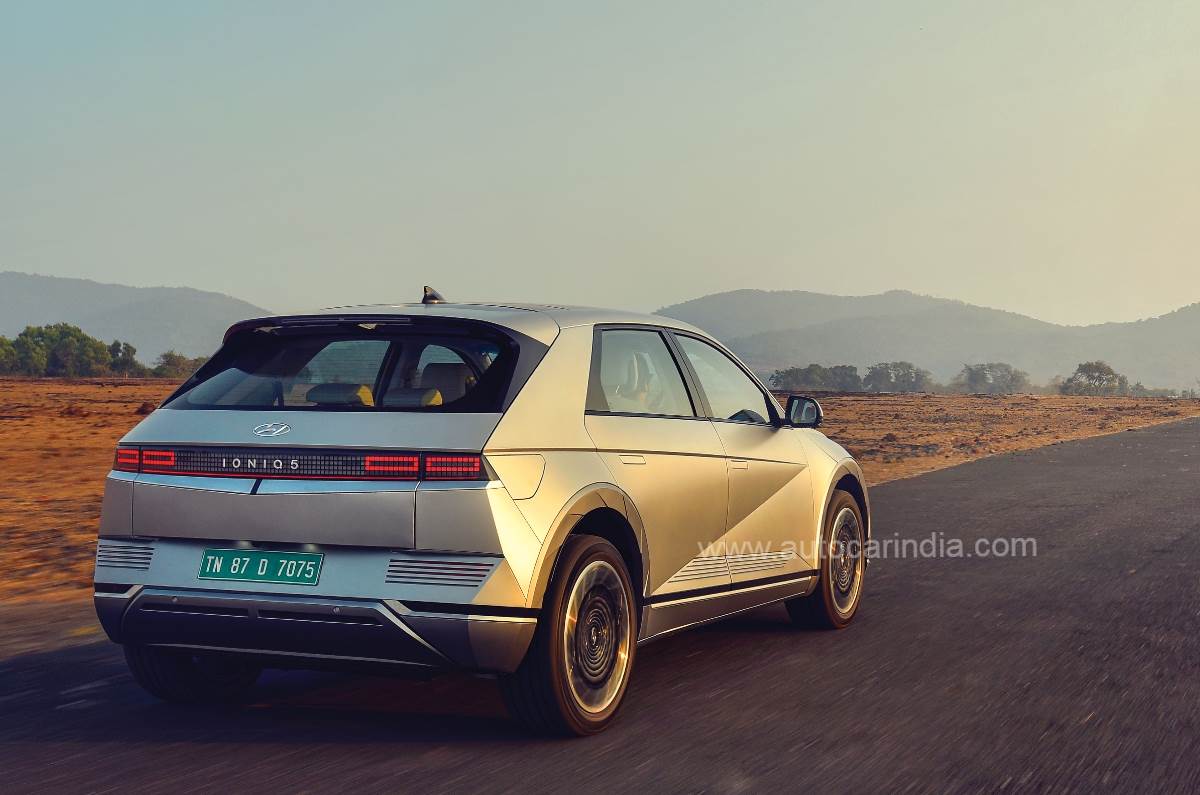
Even its massive 255/45 R20 tyres don’t hamper its low-speed ride and at no point does it feel jarring or crashy. A point to note is that ride height for India has increased, so the Ioniq 5’s ground clearance is 163mm when fully loaded, and as a result, it doesn’t graze its underbelly even over the tallest bumps. What’s also nice is that it feels well-damped and suspension noises as well as road and tyre noises barely break the silence of the cabin.
No car is perfect and the Ioniq 5 has its share of shortcomings – its boot is shallow; wireless Android Auto and Apple CarPlay are missing among a few other bits; and its badge lacks the snob value of some premium marques. However, besides these, there’s nothing you won’t like; in fact, you’ll love it. It rides well, has adequate performance and is refined and quiet, but its interiors will really challenge your perspective of what an automobile should be. A sliding floor console, a drawer instead of a glovebox, zero-gravity ottoman-style seating, and a room-like flat floor are some things that make the interior more lounge than car-like. And even on the EV front, it delivers in spades.

At 457km, its real-world battery range is very good; in fact, among the best we’ve tested so far. Charging speeds are high and the battery does not hamper ground clearance, which is more than enough to tackle everything our roads can throw up. Best of all, Hyundai has very smartly avoided the expensive all-wheel-drive set-up and is locally assembling the car, thus ensuring aggressive pricing. In summary, the Ioniq 5 is so good, once you experience it, your heart will most certainly want one and your head won’t stand in the way.
from Autocar India - All Car Reviews https://ift.tt/EmNXjOB
https://ift.tt/TOlJiwU



